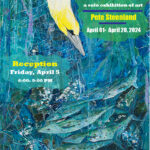As residents of Florida, we have the distinct pleasure of calling one of nature’s most majestic birds our neighbor. The Sandhill Crane, aka the Florida Ostrich, are a year-round sighting in the Sunshine State, and although we may drive by them without giving a second thought, there are many reasons to stop and appreciate these wonderful creatures.
Sandhill Cranes are divided in a series of subspecies, our year round inhabitants are known as the Florida Sandhill Crane, and although the species as a whole is plentiful in numbers, the Florida Sandhill Crane is threatened, with only some 5,000 individuals remaining. What does this mean for us? If preventative measures are not taken, the Sandhill Crane could be moved to the endangered species list, along with many other Florida inhabitants such as the manatee, and the American alligator. The state of Florida has taken protective measures, including high monetary fines, if a Sandhill Crane is killed.
Did you know? The Florida Sandhill Crane mates for life, which is why many are seen in pairs. They also participate in a dancing ritual, where they jump up and down, this is done to relieve stress or strengthen the bond between a male and a female.
What we can do to protect this majestic bird?
- Don’t feed the animals! Feeding the Sandhill Crane causes the birds to create territories. If you have a glass door or window nearby, the bird will attack their reflection.
- Be careful when filling bird feeders, try not to spill! The cranes will become regulars to the neighborhood, putting them in danger of many human intrusions such as dogs, cats or even power lines.
- If you see a Sandhill Crane in the neighborhood warn neighbors and ask them to use caution when driving.
- When golfing, watch for the cranes, and if you spot some around the area ask the course if they would consider putting up signs for other players to use caution.
- Don’t be too friendly! Sandhill Cranes are not afraid of humans, and often will come within feet of onlookers. It is important to not to get too close to them, not only to protect yourself from a rare attack, but also to protect the bird from becoming too used to human contact.













